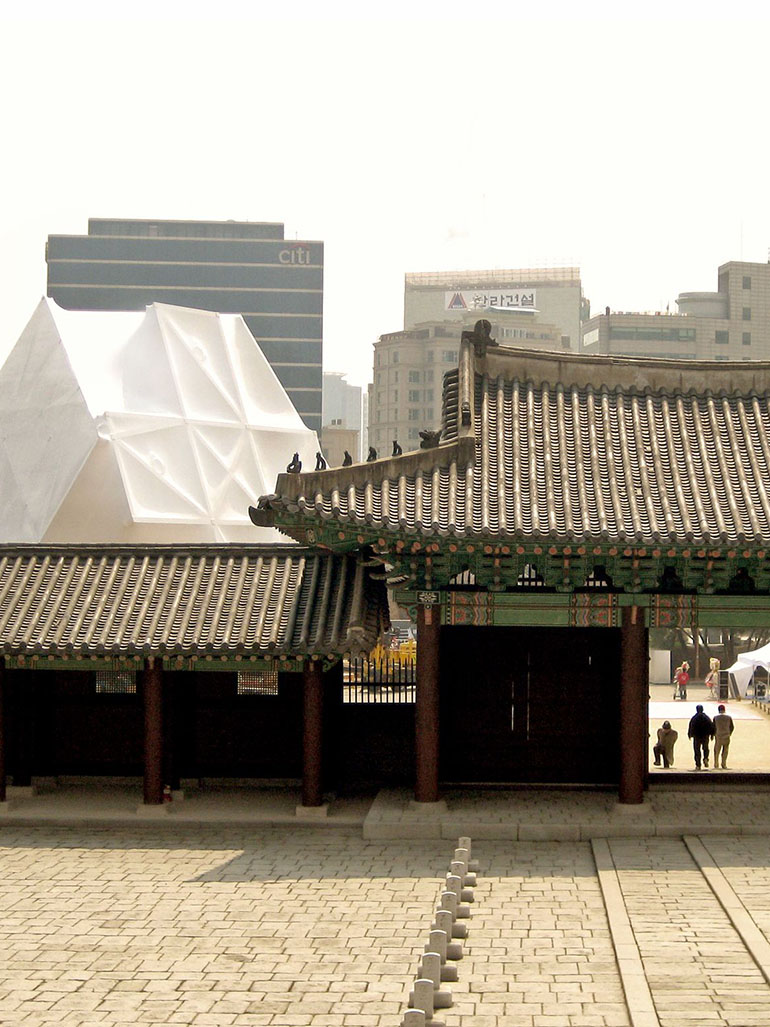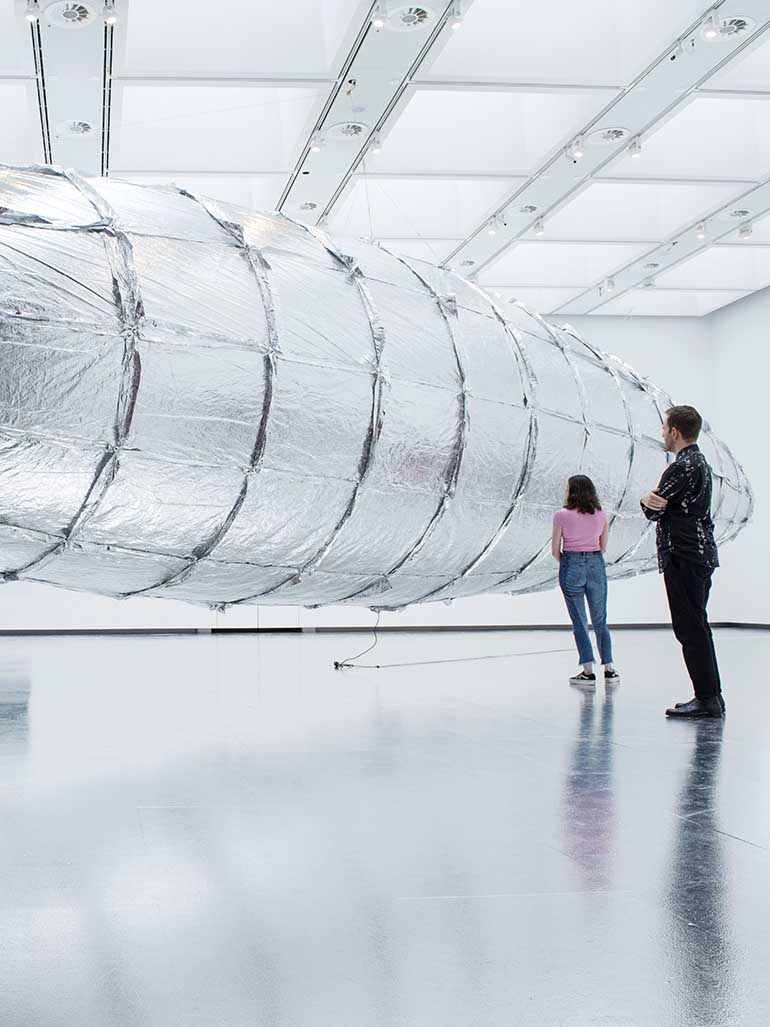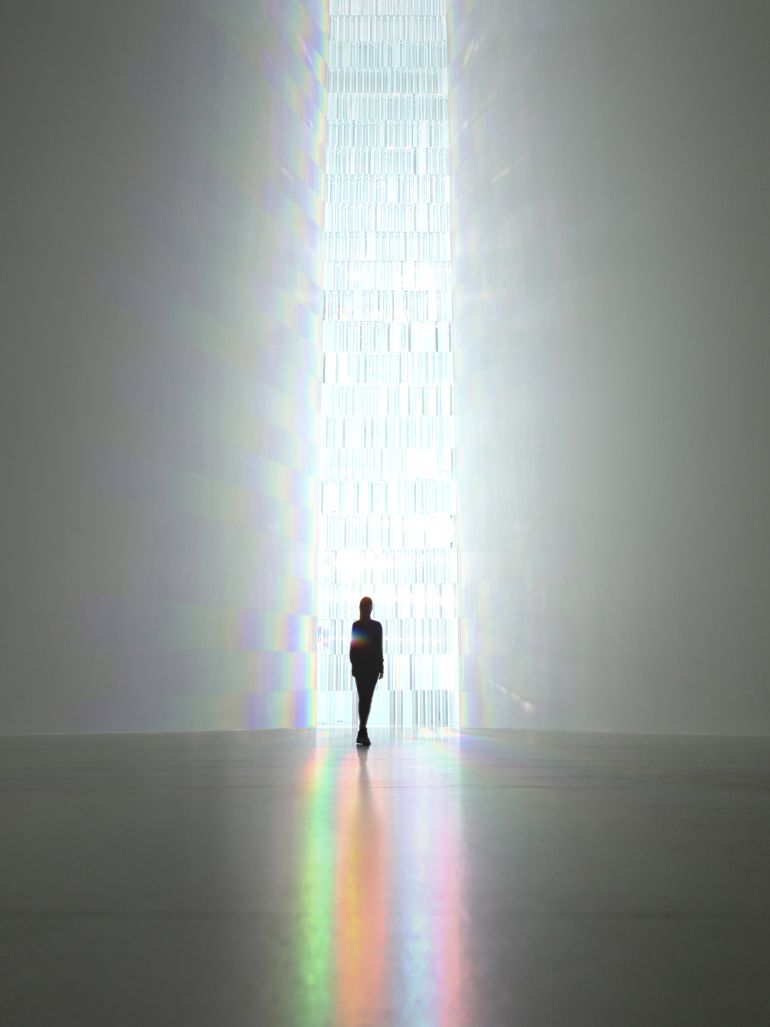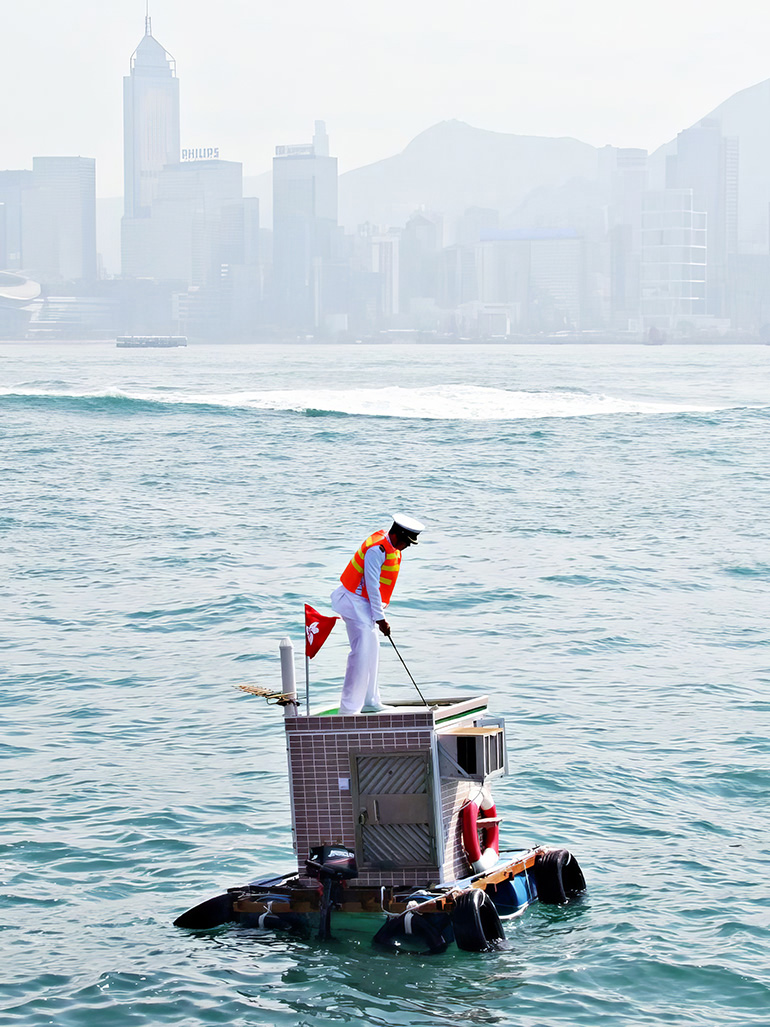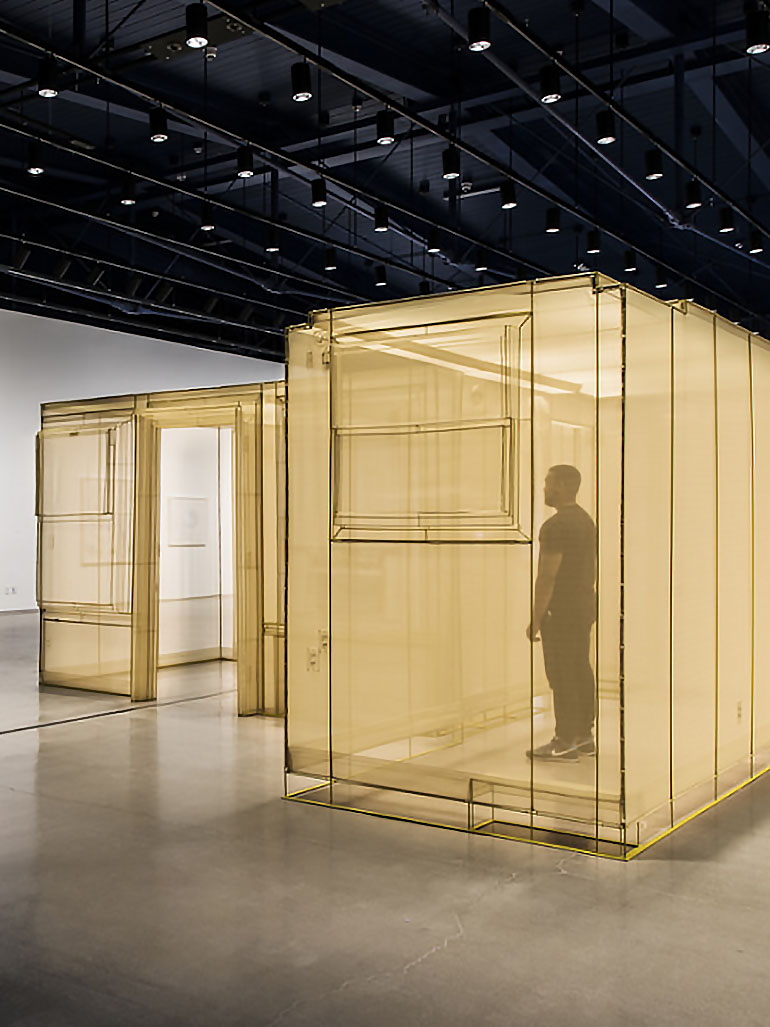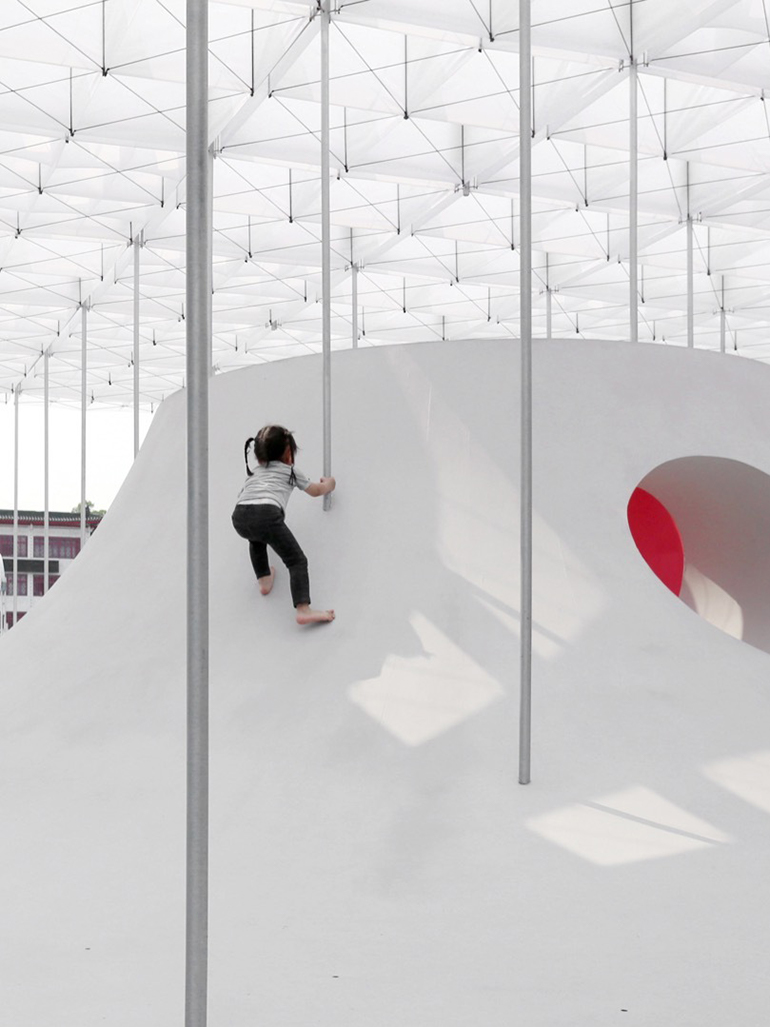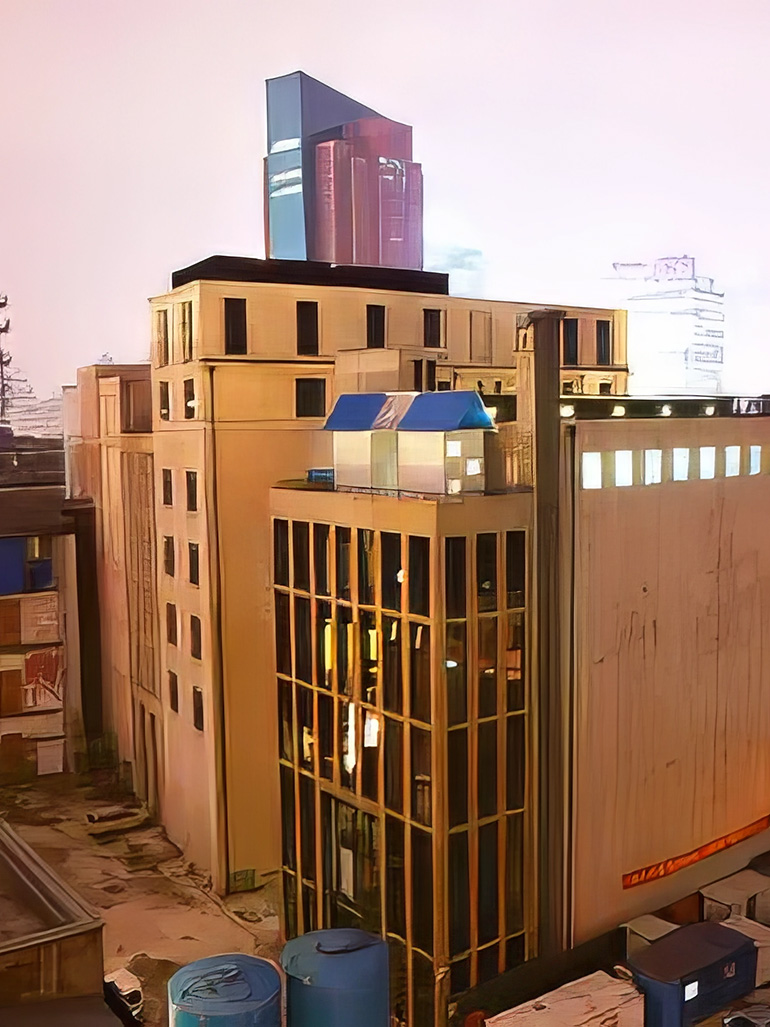
Terminal 1, Incheon International Airport, Incheon, South Korea Copy to clipboard
37.447658, 126.452753 Copy to clipboard
Before you go
Check flight timings: Ensure your visit aligns with your flight schedule to avoid missing your departure.
Crowd levels: Visit early morning or late evening for a more tranquil experience.
Stay hydrated: Airport can be dry. Carry water, especially if you plan to spend time exploring.
Best visit time
Early morning or late evening, when the airport is less crowded, offers the best viewing experience.
Directions
Incheon Airport Station
Lines: Airport Railroad Express (AREX)
By foot: Exit the station towards Terminal 1 and proceed to the main concourse.
Walking distance: 100 meters
Introduction
Imagine walking through one of the world’s busiest airports 1 and suddenly encountering a life-sized house suspended 2 in midair. Home Within Home by Do-ho Suh 3, installed at Incheon International Airport, is exactly that—a monumental, translucent 4 structure that captures the viewer’s attention in an otherwise transient space.
This captivating installation 5 reflects the artist’s ongoing exploration of the concept of home, memory, and identity, making it a thought-provoking landmark for millions of travelers passing through the airport each year.
Description
Home Within Home is a meticulously crafted work, made entirely from semi-transparent polyester fabric stretched over a stainless steel frame. The installation measures 12 meters in height, 11 meters in width, and 14 meters in length. The sheer scale and delicacy of the piece required a large team and months of precise work to bring Suh’s vision to life.
The use of translucent fabric allows light 6 to pass through the structure, giving it an ethereal, ghost-like presence. This material choice is integral to the work’s meaning, as it evokes the fragility and impermanence of the concept of home, especially in the context of migration 7 and displacement.
Curator Sarah Newman explained: 89 In Korean, the word ‘jitda’ (짓다) means both to make a dress and to make a house… Through his work, Suh makes a direct connection between a dress and a house as being intimate spaces around us. They are personal, yet outward-facing.

Interactive elements
One of the most compelling aspects of Home Within Home is how it engages viewers. As passengers move around and under the installation, their perspective shifts, allowing them to view the overlapping structures within the work. This interaction invites contemplation of the layers of personal and collective memory embedded in the concept of home.
At night, the installation takes on a new dimension. Soft, ambient lighting illuminates the structure from within, creating a warm glow that contrasts with the often stark and clinical airport environment. This nocturnal transformation adds to the piece’s dreamlike quality, producing the comforting memory of a lit home awaiting one’s return.
While primarily a visual experience, Home Within Home also interacts with the ambient soundscape of the airport. The gentle rustle of the fabric in response to air currents and the movement of people nearby adds a subtle auditory element to the installation. This delicate sound serves as a counterpoint to the typical noise of an airport, creating a sense of calm and introspection.

Context
Suh’s work is deeply rooted in his personal experience as a Korean 10 expatriate living in the United States 11. The house depicted in Home Within Home is a recreation of the artist’s childhood home in Seoul 12, enveloped by the façade of his first residence in Rhode Island. Suh said 1314:
Home started to exist for me when I no longer had it.
This juxtaposition of two significant locations from his life reflects the artist’s exploration of cultural hybridity and the emotional complexities of belonging. Suh’s work speaks to the broader experiences of immigrants and those who navigate multiple cultural identities.
Home Within Home can be seen as a continuation of Suh’s exploration of space and identity, which is evident in his other works such as “Seoul Home/L.A. Home/New York Home/Baltimore Home/London Home/Seattle Home” (1999). This earlier piece, consisting of a translucent fabric replica of Suh’s childhood home, laid the groundwork for the more complex and monumental Home Within Home.

In the context of airport art, Home Within Home shares similarities with other large-scale 15 installations that aim to create moments of reflection in transient spaces. For example, it could be compared to Janet Echelman’s Every Beating Second at San Francisco International Airport, which also uses translucent materials to create a sense of wonder and contemplation.

Analysis
Home Within Home holds significant cultural value both locally and globally. In South Korea 16, it serves as a poignant reminder of the country’s complex history of division, migration, and globalization.
Internationally, the work resonates with audiences due to its exploration of the universal themes of home and identity. Suh’s installation also highlights the evolving role of public art 17 in spaces like airports, which are increasingly becoming venues for cultural expression and engagement.
The psychological impact of Home Within Home is profound. The installation evokes a range of emotions, from nostalgia to melancholy, as viewers confront the layered memories and identities embedded in the concept of home.
In an interview with Wallpaper, 1819 the artist said: I was trying to hold onto something but it was also a ritual to let things go. Memories were triggered by the recovery of small textures or details that I had completely forgotten. Through the rubbing they resurfaced so I lived that time very intensively. And then I came out of it. It was like shedding skin and now I feel like I have been granted another body.
The work encourages introspection, prompting viewers to reflect on their own notions of belonging and the places they call home. This emotional depth shows Suh’s ability to connect with audiences on a deeply personal level, even in a public, transient space like an airport.
The overlapping structures in Home Within Home symbolize the layering of memories, cultures, and identities that shape our understanding of home. The transparency of the fabric represents the porous nature of cultural boundaries and the fluidity of identity in a globalized world. The suspension of the house in midair can be interpreted as a metaphor for the state of limbo often experienced by immigrants or those caught between cultures.

The overlapping structures in Home Within Home symbolize the layering of memories, cultures, and identities that shape our understanding of home. The transparency of the fabric represents the porous nature of cultural boundaries and the fluidity of identity in a globalized world. Suh said 2021:
The experience was about transporting space from one place to the other—a way of dealing with cultural displacement. And I don’t really get homesick, but I’ve noticed that I have this longing for this particular space, and I want to recreate that space or bring that space wherever I go.
Since its installation, the relevance of Home Within Home has only grown. In an era of increasing global mobility and displacement, the work’s themes of home, identity, and belonging have become even more pertinent. The COVID-19 pandemic, which drastically altered patterns of travel and heightened feelings of isolation, has added new layers of meaning to the piece, emphasizing the fragility of our connections to place and community.
Final words
Home Within Home is more than just an art installation—it’s a powerful meditation on identity, memory, and the meaning of home in a globalized world. Its presence in Incheon International Airport, a hub of movement and transition, challenges us to think about where we come from and where we’re going.
As Suh explains, reflecting on his artistic approach 2223 I think home is something that you carry along with your life. That’s what I mean by [saying] it’s something that you can repeat over and over again. I just dealt with that issue visually.
The work’s ability to evoke personal reflection while addressing universal themes makes it a truly remarkable piece of public art. As we move forward in an increasingly interconnected yet often divided world, works like Home Within Home serve as important reminders of our shared humanity and the complex nature of belonging. They invite us to pause, even in the midst of our journeys, to consider the many homes we carry within us.
Explore nearby
 Rem Koolhaas' Prada TransformerInstallation ended (dismantled in 2009)48 km away
Rem Koolhaas' Prada TransformerInstallation ended (dismantled in 2009)48 km away Lee Bul's giant metal ZeppelinInstallation ended (dismantled)49 km away
Lee Bul's giant metal ZeppelinInstallation ended (dismantled)49 km away Tokujin Yoshioka's Rainbow ChurchExhibition ended (dismantled in 2010)53 km away
Tokujin Yoshioka's Rainbow ChurchExhibition ended (dismantled in 2010)53 km away Carl De Keyzer spent 30 months in North KoreaPhoto documentation (2015-2017)56 km away
Carl De Keyzer spent 30 months in North KoreaPhoto documentation (2015-2017)56 km away Eric Lafforgue: Banned from North KoreaPhoto documentation (2008-2012)59 km away
Eric Lafforgue: Banned from North KoreaPhoto documentation (2008-2012)59 km away
